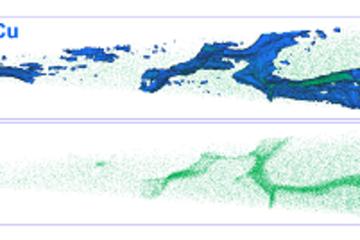All genres
21.
Talk
Theory-guided design of Ti-based binaries for human implants. Euromat 2007, Nürnberg, Germany (2007)
22.
Talk
Theory-guided design of Ti-binaries for human implants. XVI. International Materials Research Congress, Cancun (Merrida), Mexico (2007)
23.
Talk
Ab initio prediction of elastic and thermodynamic properties of metals. Seminar in Friedrich-Alexander-Universitaet, Erlangen-Nürnberg, Germany (2007)
24.
Talk
Theory-guided design of Ti-based binaries for human implants. Spring meeting of the German Physical Society (DPG), Regensburg, Germany (2007)
25.
Talk
Bottom up design of novel Titanium-based biomaterials through the combination of ab-initio simulations and experimental methods. Materials Research Society fall meeting, Boston, MA, USA (2006)
26.
Poster
Theory-guided design of Ti–Nb alloys for biomedical applications. 1st International Conference on Material Modelling, Dortmund, Germany (2009)
27.
Poster
Bottom up design of novel titanium-based biomaterials through the combination of ab-initio simulations and experimental methods. Euromat 2007, Nürnberg, Germany (2007)
28.
Poster
Theory-guided design of Ti-binaries for human implants. "Theory Meets Industry" workshop, Vienna, Austria (2007)
29.
Poster
Ab initio study of chemical and structural trends of Ti-based binary alloys. Materials Research Society fall meeting, Boston, MA, USA (2006)
30.
Teaching
1) Design of new Ti-based biomaterials by using ab-initio simulations, FEM, and experiments 2) Detailed analysis of an indent. Lecture: AICES – MIT conference, RWTH Aachen, Germany, October 08, 2007
31.
Thesis - Bachelor
Gefüge- und Eigenschaftsuntersuchungen an den Ti-20Mo-7Zr-5Ta und Ti-35Nb-7Zr-5Ta β-Titanlegierungen für medizinische Implantate. Bachelor, FH Düsseldorf, Düsseldorf (2008)
32.
Report
Ab-initio simulation and experimental validation of beta-titanium alloys. (2008)











